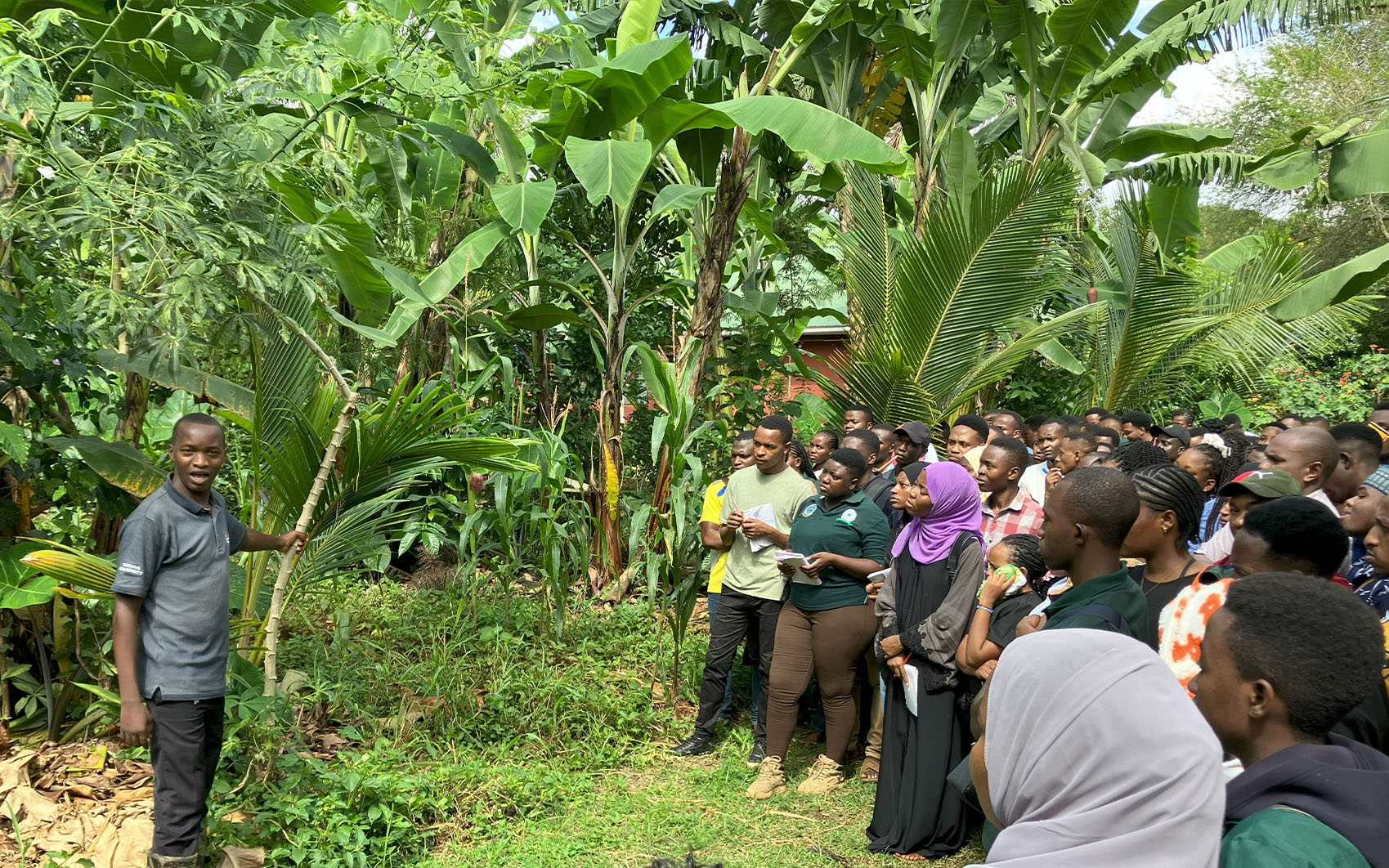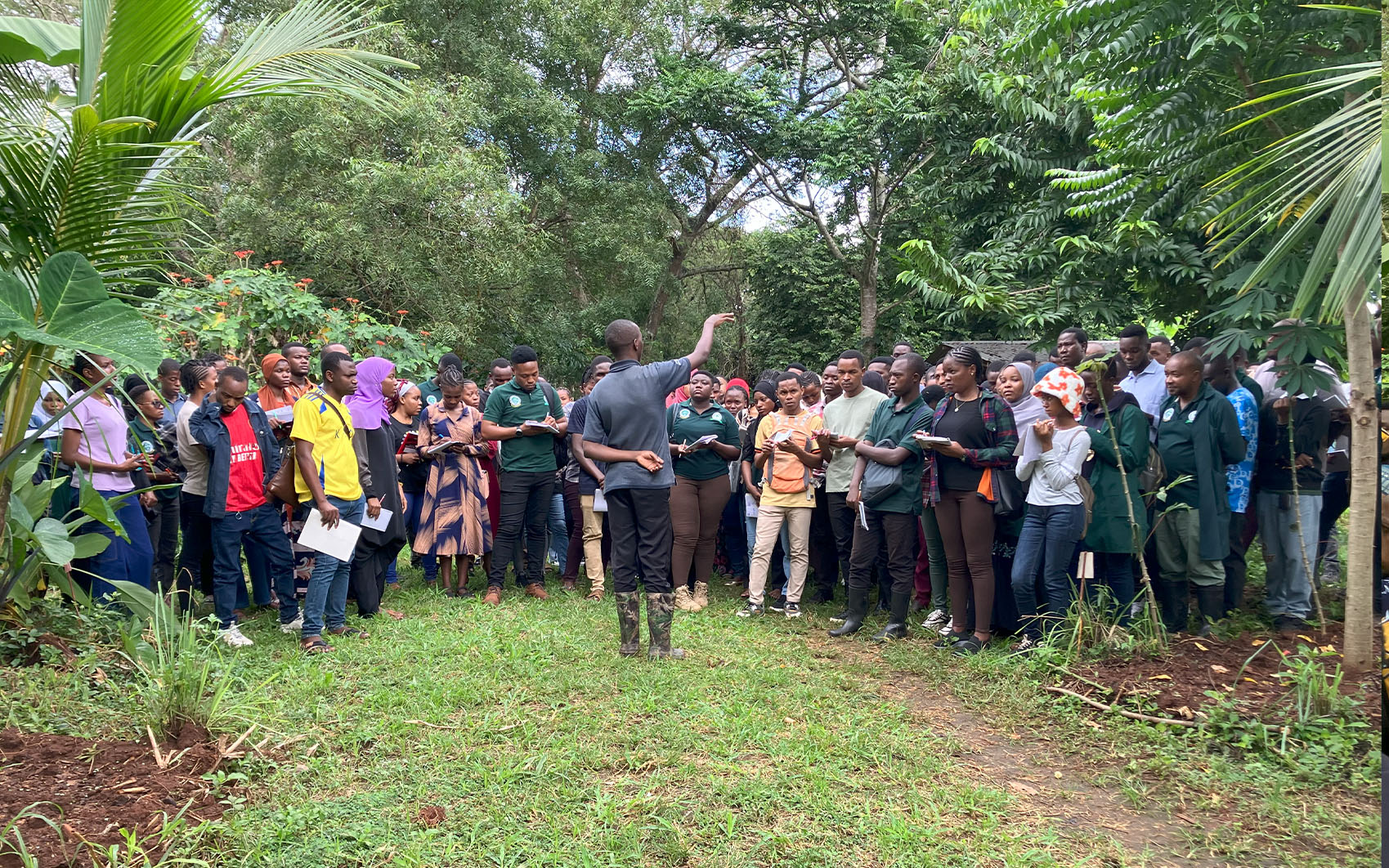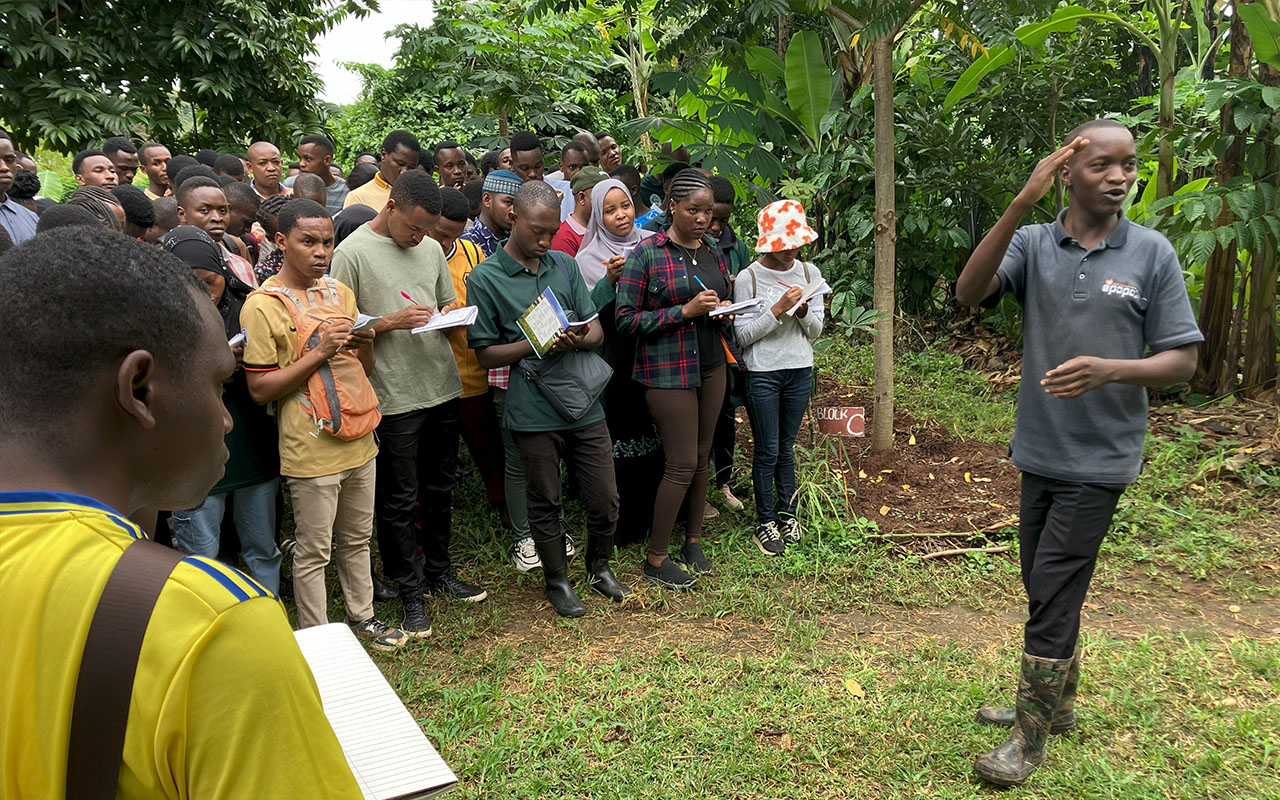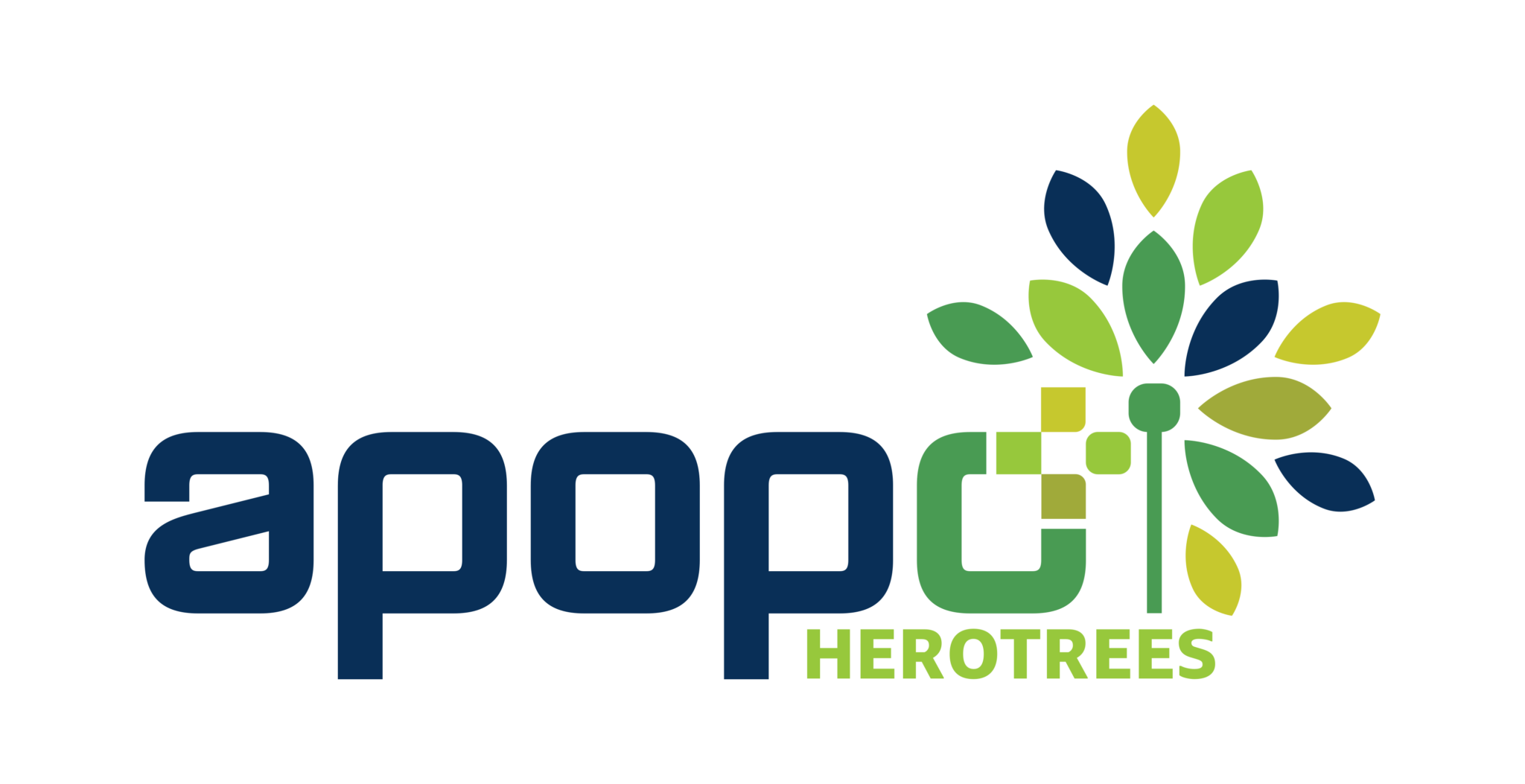On May 28, 2025, 198 second-year BSc Forestry students from Sokoine University of Agriculture (SUA) visited APOPO’s headquarters based at the university’s campus for a practical session as part of their Agroforestry Systems and Technology course. The training was part of the Syntropic Agroforestry Innovation Accelerator (SAIA), a platform supporting agroforestry education in Tanzania through applied learning and research.
Students were introduced to the principles of syntropic agroforestry, developed by Ernst Götsch, through a classroom briefing and a guided field visit to APOPO’s demonstration plot. Led by APOPO’s HeroTREEs officer, Aron Katosho, a syntropic agroforestry specialist, the session offered students a close look at succession planning, plant layering, and regenerative system design.
Many students reflected on how the visit helped bridge the gap between theory and practice, reinforcing concepts from their coursework and expanding their understanding of biodiversity and productivity in agroforestry.
Field Learning and Student Reflections
The visit included guided observation of species arrangements, management strategies, and soil-enhancing practices within a working syntropic agroforestry system. During the post-visit discussion, students proposed ideas for expanding the system’s value, including integrating beekeeping with stingless bees for pollination and diversified income, and incorporating small livestock like rabbits to support nutrient cycling.
These suggestions reflected course teachings on system design using five main components: perennial woody plants, crops, animals, insects, and aquatic life, which can be combined in diverse ways to enhance system performance.

Academic Integration and Practical Follow-Up
Accompanying lecturers Dr. Jacklin Kajembe and Mr. Kelvin Lyatuu supported discussions and assigned a follow-up report. Students were asked to evaluate system performance, assess plant health and structure, propose criteria for selecting perennial species, and offer suggestions for improvement.
To encourage participation, APOPO HeroTREEs offered a $50 prize for the best group report and invited students to submit research proposals for potential support through the SAIA platform.
Ongoing Engagement
On June 10, 2025, Mr. Katosho returned to SUA for two guest lectures. The first focused on selecting, diversifying, and evaluating trees and shrubs in agroforestry systems. The second covered how to manage component interactions—like competition and stratification—within complex, productivity-driven syntropic models.
Later, on June 21, the top-performing group presented their findings. From this group, seven students volunteered to support APOPO HeroTREEs during their August–October study break. They will assist with farmer mobilization in Mgeta (in partnership with MLDF), nursery work, and syntropic agroforestry field management.
On June 9, APOPO also welcomed 25 international students from Norway to its demonstration site. The visit included both theoretical instruction and hands-on field training, supporting SAIA’s goal of promoting international knowledge exchange.
Advancing Agroforestry Education in Tanzania
Through initiatives like SAIA, APOPO HeroTREEs continues to support agroforestry education in Tanzania, bridging academic training with practical field application. By equipping students with real-world skills in regenerative agriculture, we are helping to shape a future generation of professionals committed to sustainable land use.

Support the HeroTREEs project and help protect the environment and safeguard the future of local communities?


